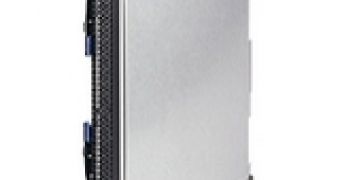IBM is one of the leading manufacturers and vendors of servers and mainframes since the good old days when the first iteration of the System z platform was hot news. Recently, the big and blue company entered the blade server market and now they are already thinking expansion plans in order to maintain their place on a market where they must battle another big company: HP. The latest design concept from IBM calls for a pair of BladeCenter HS21 blade servers running Red Hat Linux to be integrated and linked into a single blade server unit that will be later used by the data-integration software Information Server.
According to this article, Rob Vrablick, IBM Information Server Blade strategy and planning manager says that the server running the Information software will allow customers to move and consolidate big amounts of data in order to avoid performance penalties that usually occur in SMP architectures. The blade server concept became so popular in a short span of time because it allows for a high degree of flexibility; if more processing power is needed simply plug in more blades and the problem is solved. Within a single grid cluster, more blades can coexist so it is necessary to employ a workload manager and the Information Server Blade newly released by IBM uses the Tivoli Workload Scheduler Load Leveler that can manage independent workloads in parallel.
IBM aimed at letting customers perform massive data consolidation tasks and processing in a faster way and using a smaller server footprint. Also the blade architecture (the hardware layer of the Information Server Blade) needs less power than a traditional SMP solution. According to Rob Vrablick, using the blade server design can mean a very large cost reduction: "They were able to do more workload in less time and reduce their budget capital expenditures by 75 percent".
While a minimum blade server configuration is not exactly cheap, as the management module and three blades coupled with one year of maintenance reach $330.000, the traditional server configurations are much more expensive. Unlike traditional servers, all blade servers can be upgraded by buying additional blades at an average price of $90.000 each, software included. In order to make its own blade model more attractive to customers, IBM even leases the servers for up to 60 months.

 14 DAY TRIAL //
14 DAY TRIAL //